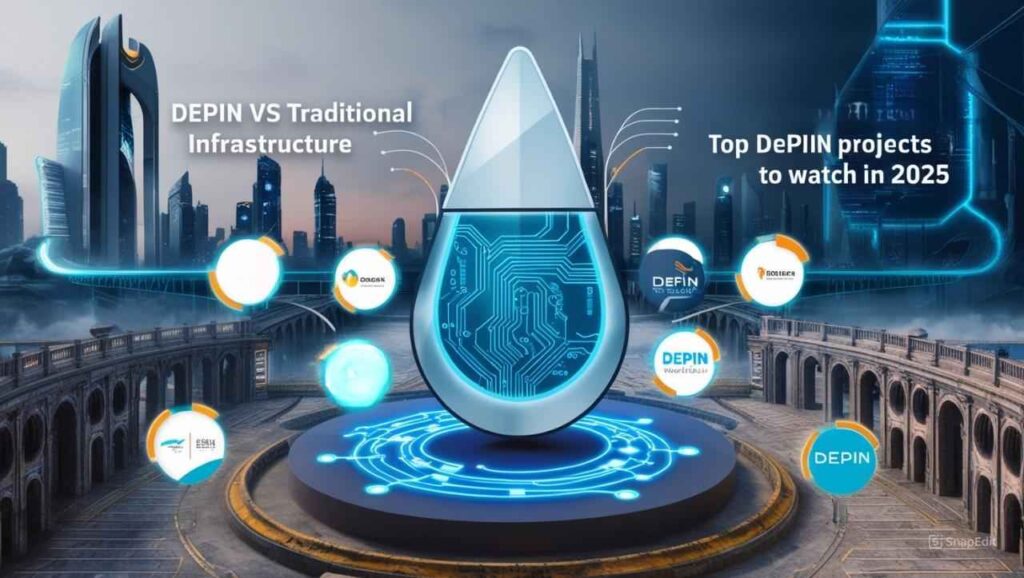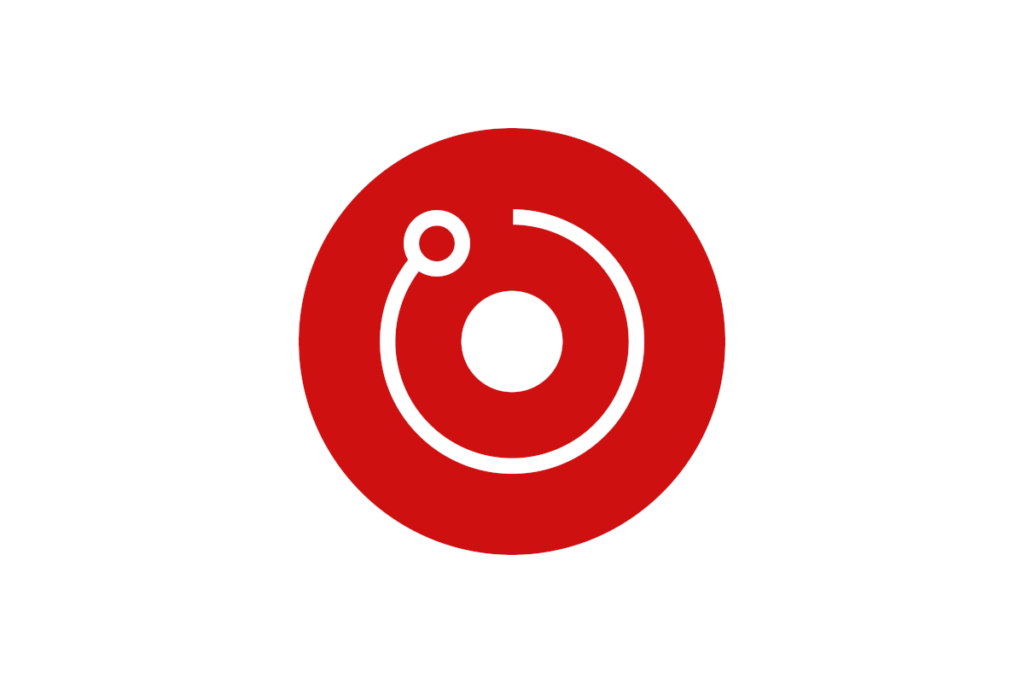
Infrastructure forms the backbone of modern society, enabling essential services such as transportation, communication, and energy distribution. Traditional infrastructure, characterized by centralized control and high capital investment, has been the cornerstone of global development. However, a new paradigm is emerging—Decentralized Physical Infrastructure Networks (DePIN).
DePIN leverages blockchain technology and decentralized governance to offer innovative alternatives to traditional systems. By addressing key challenges such as centralization, inefficiency, and inflexibility, DePIN presents a compelling vision for the future of infrastructure. This article explores the contrasts between DePIN and traditional infrastructure and highlights the top DePIN projects poised to shape 2025.
What is DePIN (Decentralized Physical Infrastructure Network)?
DePIN represents a novel approach to managing physical infrastructure by decentralizing control and leveraging blockchain technology. Core principles include:
- Decentralization: Decision-making and operations are distributed among a network of participants.
- Tokenized Incentives: Participants are rewarded with tokens for their contributions, fostering community-driven growth.
- Community Governance: Stakeholders collectively make decisions, ensuring transparency and inclusivity.
DePIN exemplifies the integration of blockchain with physical infrastructure, creating systems that are more adaptable and resilient.
Advantages of DePIN
DePIN addresses many shortcomings of traditional systems while introducing unique benefits:
- Reduced Centralization: Eliminates single points of failure, enhancing resilience.
- Cost Efficiency: Decentralized coordination reduces operational expenses.
- Scalability: Networks grow organically through user participation and token incentives.
- Alignment with Web3: Seamless integration with decentralized digital ecosystems creates new opportunities for innovation.
Challenges of DePIN
As a nascent technology, DePIN faces hurdles such as:
- Regulatory Hurdles: Navigating compliance across diverse jurisdictions.
- Technological Maturity: Addressing issues of scalability and interoperability.
- Security Concerns: Ensuring robust protections against cyber threats while maintaining decentralization.
Comparison: DePIN vs Traditional Infrastructure
Governance and Ownership
Traditional infrastructure is typically centralized, with governments or corporations exercising control. In contrast, DePIN operates on decentralized governance models where communities share ownership and decision-making power. This shift democratizes access and fosters inclusivity.
Cost Efficiency
Funding mechanisms diverge significantly between the two approaches. Traditional infrastructure relies on taxes and public budgets, often resulting in bureaucratic inefficiencies. DePIN, however, employs token economies, where participants fund and benefit from the system’s success, reducing costs and enhancing sustainability.
Scalability and Accessibility
Traditional infrastructure requires substantial investments for expansion, which can delay service delivery to underserved regions. DePIN, with its incentivized model, scales more fluidly, extending services to remote and underserved areas through community-driven initiatives.
Resilience and Innovation
Traditional systems are often less adaptive to technological advances and are prone to systemic failures. DePIN’s decentralized architecture ensures greater resilience, enabling rapid adoption of innovations and minimizing the risk of widespread disruptions.
Top DePIN Projects to Watch in 2025
1. Helium Network
The Helium Network stands out as a decentralized wireless network designed for IoT devices. Users deploy hotspots to provide coverage and earn HNT tokens as rewards. This model has driven global adoption, creating a robust network with minimal centralized oversight. In 2025, Helium aims to expand its reach and support new use cases, such as 5G connectivity.
2. Filecoin Green
Filecoin Green pioneers decentralized storage with a focus on sustainability. It incentivizes users to contribute eco-friendly storage solutions while maintaining data integrity. By integrating blockchain with green practices, Filecoin Green addresses the growing demand for sustainable infrastructure.
3. Render Network
The Render Network decentralizes GPU rendering, a critical process for industries such as media, AI, and gaming. By distributing rendering tasks across a global network of GPUs, it reduces costs and accelerates workflows. Its potential applications in 2025 include virtual reality, metaverse development, and large-scale simulations.
4. EnergyWeb
EnergyWeb leverages blockchain to decentralize energy grids and promote green energy adoption. It empowers consumers and producers to interact directly, fostering innovation in energy markets. In 2025, EnergyWeb is expected to play a pivotal role in advancing decentralized energy systems.
5. DIMO (Decentralized Mobility)
DIMO is transforming the automotive industry by decentralizing vehicle data sharing. This approach enables safer autonomous driving and more efficient mobility solutions. With advancements in connected vehicles, DIMO’s influence is set to grow significantly in the coming years.
6. Akash Network
Akash Network reimagines cloud computing by decentralizing infrastructure. Users can deploy and manage applications on a cost-effective and scalable platform. As the demand for decentralized applications increases, Akash Network is poised to emerge as a leading alternative to traditional cloud services.
Use Cases and Success Stories of DePIN
Real-world examples highlight the transformative impact of DePIN. For instance, Helium has successfully expanded IoT connectivity to underserved regions, while Filecoin Green has provided cost-efficient data storage for businesses. These achievements underscore DePIN’s potential to revolutionize various sectors.
Emerging Use Cases
DePIN’s versatility is evident in its emerging applications, including:
- Decentralized healthcare networks to improve patient data sharing.
- Blockchain-enabled logistics systems for enhanced supply chain transparency.
- Autonomous transportation networks leveraging decentralized mobility solutions.
Future Trends in DePIN
Technology Advancements
Technological progress will drive DePIN’s evolution, with key developments including:
- Layer-2 blockchain solutions for improved scalability and cost efficiency.
- Enhanced integration of IoT and edge computing to support advanced infrastructure.
Regulatory Landscape
Governments worldwide are beginning to recognize the potential of DePIN. In 2025, a balanced regulatory framework will likely emerge, fostering innovation while ensuring compliance.
Market Growth
Industry analysts predict exponential growth for DePIN across multiple sectors, with energy, healthcare, and logistics poised to benefit the most. By 2025, DePIN’s market share is expected to rival traditional infrastructure in certain domains.
Challenges Ahead for DePIN
While DePIN offers promising advantages, challenges remain:
- Interoperability: Bridging different blockchain networks to create seamless ecosystems.
- Usability: Enhancing user interfaces to make decentralized systems accessible to non-technical users.
- Adoption: Educating stakeholders about the benefits of DePIN and driving broader adoption.
Conclusion
DePIN vs Traditional Infrastructure represents a pivotal debate in shaping the future of societal systems. By addressing the limitations of traditional approaches, DePIN fosters innovation, resilience, and sustainability. As 2025 approaches, projects like Helium, Filecoin Green, and EnergyWeb illustrate the transformative potential of decentralized solutions. These advancements herald a new era for infrastructure, offering unparalleled opportunities for industries and communities worldwide.
Must Read – Top 5 DeFi Lending and Borrowing Platforms: A Beginner’s Guide to Earning and Borrowing in Crypto






